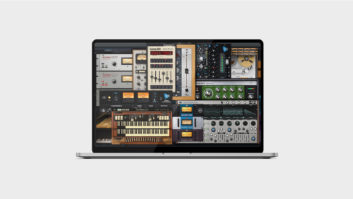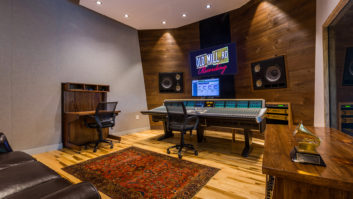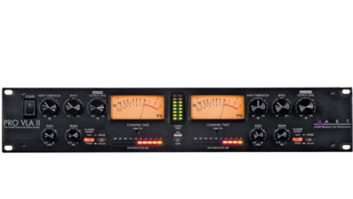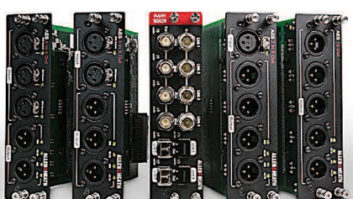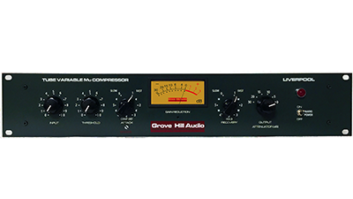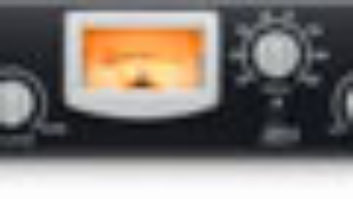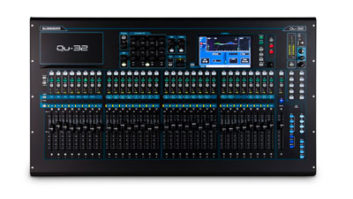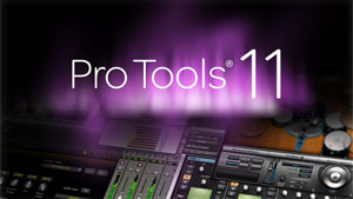

With the DAW-centric nature of production today, more recordings are being made without a console in remote locations and workstation-based studios. But whether your audio is patched into a mixer or directly feeding a computer interface, the need for quality mic preamps is unchanged. From a convenience standpoint, as a replacement for inferior interface preamps or as an alternative to console pre’s, outboard preamplifiers with tubes and/or transformers can add a different flavor to a recording.
Groove Tubes ViPRE
Engineers tracking in traditional rooms are accustomed to the luxuries of console dynamics/EQ and staple outboard gear. Channel strips provide a one-stop tracking solution, combining one or more preamps with EQ, dynamics or even digital I/O for simple integration with digital gear. And with a huge variety of outboard preamps and channel strips available, the art of microphone preamplification has truly come of age.
COLD…WARM, WARMER…
All preamps are capable of raising a mic’s weak output to match a line-level input. Yet some situations require a transparent translation of the source (such as orchestral recording) while others may call for a degree of coloration or distortion of the source (i.e., rock guitars/drums). Some would assume that a tube-based pre would be “warm,” colorful and even fuzzy while transistors are “cold” and harsh. But on the contrary, a tube pre can be very transparent and exhibit clarity and definition with the proper tube selection and circuit design. Equally, solid-state pre’s can be very dimensional and colorful — the perfect examples are API and Neve preamps. The right combination of tubes, transformers, transistors or op amps can create a vast array of different sounding preamps.

Pendulum Audio ES-8
Every preamp can be driven to the point of overload (distortion). As amplifiers reach this threshold, various preamp designs react differently. Certain harmonic information proportional to the source is amplified or changed, adding character or color. Generally, a single-ended, triode tube amp heavily enhances second and third harmonics along with fourth and fifth harmonics. Some designers consider this “musical.” Also, when driven hard, unsymmetrical clipping also results. While transistor amps induce strong third harmonic information, overdriving a transistor amp emphasizes other harmonics, yet clipping with symmetrical square waves will result. As tube preamps enter their overload region, they add the pleasant harmonic distortion, but as a side effect, the input-to-output signal is not proportional, resulting in a limiter effect.
Some preamp designs have adopted a dual topology. Manley’s TNT and Millennia Media’s STT-1 include tube and discrete solid-state pre’s, all in one package.

Universal Audio 6176
ATTENTION TO DETAIL
A tube channel strip doesn’t always mean the entire signal chain is all-tube. As an example, Universal Audio’s LA-610 includes a tube preamp and T4 opto compressor much like the LA-2A. On the other hand, UA’s model 6176 combines the same 610 tube pre, but with an 1176LN solid-state compressor.
Preamps and channel strips — whether tube, solid-state or hybrid designs — share many features in common. These include phantom power (besides 48 volts, a few also include options for powering +130V B&K/DPA mics), polarity inversion, input pads and a ¼-inch high-impedance DI input for interfacing electric guitar and bass. Highpass filters can play a big role in preventing obtrusive low-frequencies (adjacent instruments, air conditioners, traffic rumble, etc.) from eating up headroom. Metering can vary from a simple clip LED to LED segment and/or VU metering displaying the pre’s input/output as well as compressor gain reduction. One feature that’s becoming more popular is variable input impedance, which can play a big role in a mic’s sound.
Digital outputs provide easy connectivity to DAW interfaces, while offering an alternative to the inferior A/D converters on some soundcards and interfaces. More sophisticated tube channel strips, like Pendulum Audio’s Quartet, provide separate inserts for their EQ and compressor, allowing them to be used independently during mixdown. As found on the Drawmer 1960, another channel strip feature is sidechain access points, where an external EQ can be patched for using the compressor as a de-esser.
The variables between mic selection, mic placement and preamps used are endless. Experience and understanding which preamp is best suited for a given application can save you time and frustration. In the pages that follow, we’ve provided charts with information on dozens of tube preamps for pro applications. A tube mic preamp may provide the clarity you have always dreamed about, or it can serve as the sonic paintbrush in the trenches of tracking. Happy hunting.
Tony wishes to thank Dale Epperson for his help with this feature. Tony is a daddy to Brooklyn and Luc, and a husband, engineer, educator and writer.

PLAY:
Tube Mic Preamps Shopping Guide
PLAY:
Tube Mic Channel Strips Shopping Guide
The Z Factor
An often-overlooked spec for most mic preamps is input impedance (Z): AC opposition in a circuit measured in ohms. Matching a mic’s output impedance (low-Z) to a preamp’s input impedance (microphone output loading) results in a maximum voltage transfer. When mics drive a lower-impedance load, increased distortion and decreased headroom can result. Condenser mic designs are less susceptible to output loading due to their buffer amps, while dynamic and passive ribbon mics (typically 20 to 300 ohms) are more affected by output loading. As for preamps, transformer-coupled mic preamps tend to have more personality or color, while transformerless pre’s are usually more neutral, quieter and have higher input impedance. A common rule of thumb is for a mic’s load impedance (preamp) to be five or more times its output impedance. Here are some staple microphones and their rated output impedance: AEA R84, 270 ohms; Sennheiser MD421 II, 200 ohms; and Neumann U87Ai, 200 ohms. A properly selected mic/pre combination can yield better overall frequency response, and increased headroom and transient response.
—Tony Nunes
